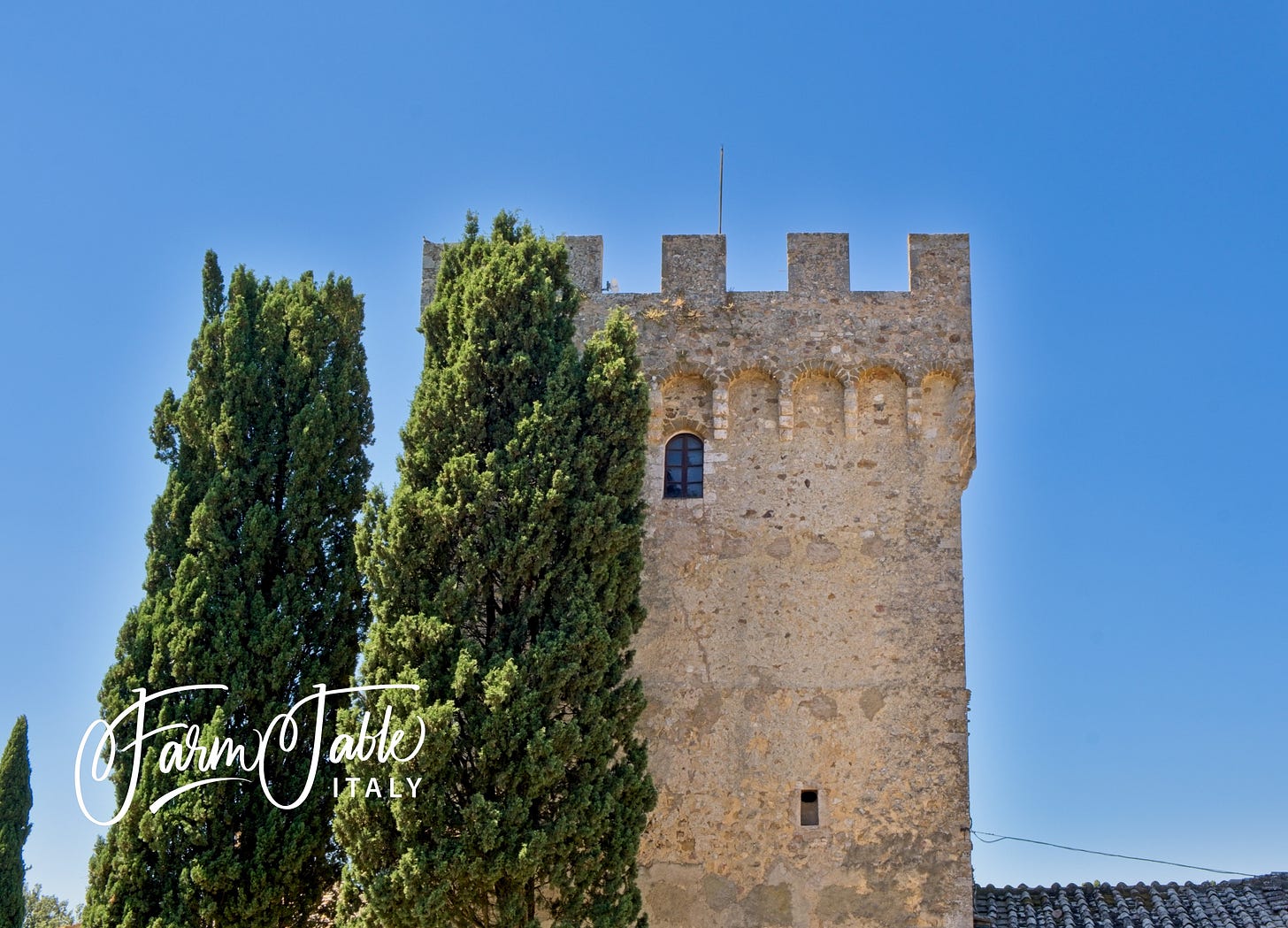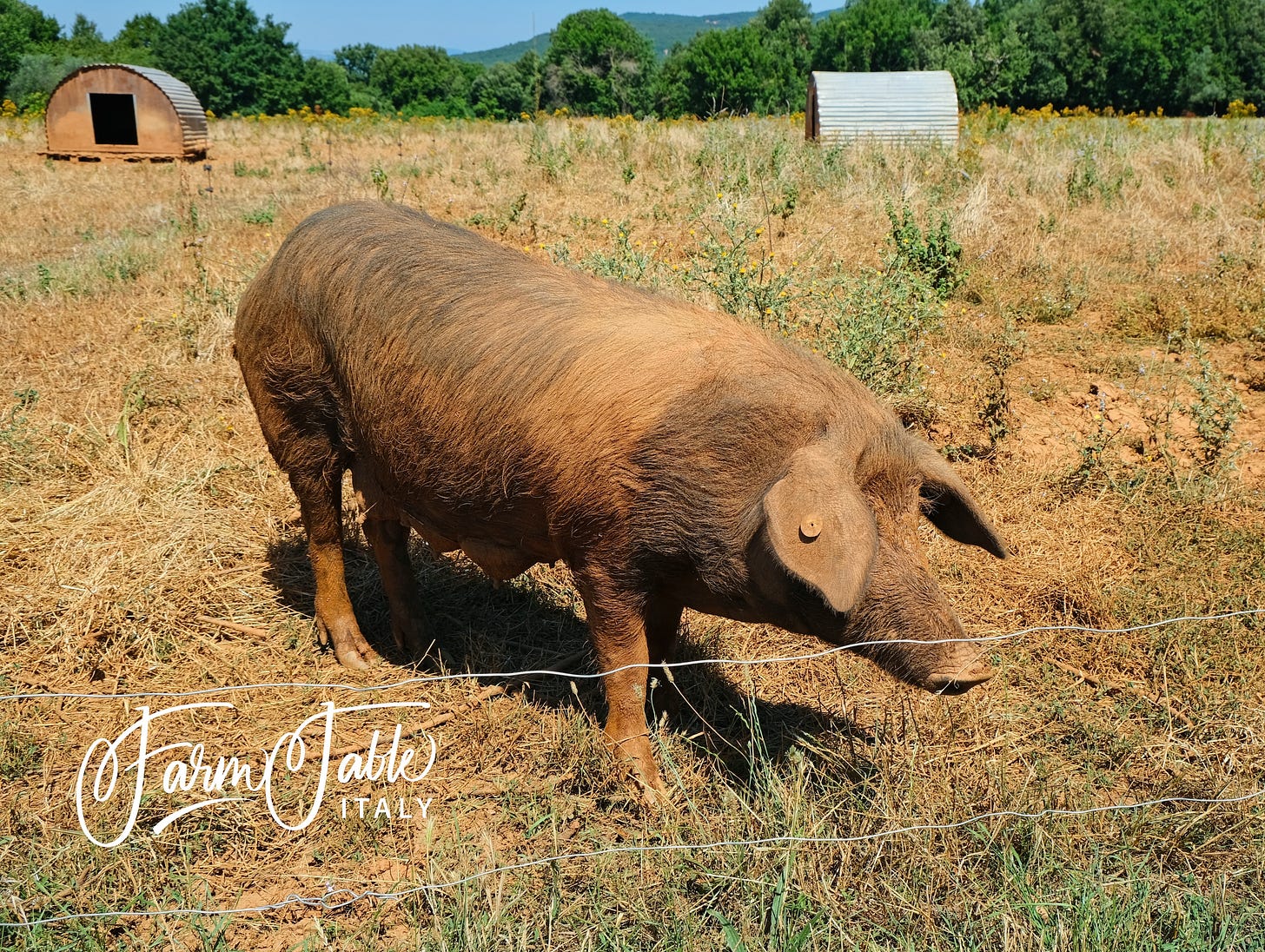Part II: Tenuta Spannochia (Siena, TU)
A brief history of Spannocchia & the Mezzadria system
Nestled in the Montagnola Senese, Tenuta Spannocchia is a living monument to the history of Italian farming in Tuscany and an ongoing, sustainable effort to keep that spirit alive going forward. In part I of this series, I wrote that Spannocchia is best understood through its mission: the preservation of a property that dates to 1225 and to its missions of sustainable farming. In that spirit, many of its visitors & guests are scholars, artists, musicians and environmentalists dedicated to their mission. The farm produces certified organic olive oil, wine and seasonal vegetable used in the meals they serve their guests.
To understand Spannocchia requires a basic understanding of the history of the mezzadria system from which it evolved and which has deep roots in medieval Italy. Several years ago, I met with Randall Stratton and spoke with him about the history of the property and his preservation work. Randall’s family has owned the estate since the 1920s; he provided me with a fascinating history of the property and of its unique status.
Mezzadria
In general, mezzadria was an Italian form of share-cropping prevalent in Italy beginning in the Middle Ages. Unlike other harsher forms of feudal relationships, mezzadria operated from a slightly more equal footing between the landowner (called the concedente) and the farmer (called the mezzadro.) The mezzadro would farm the land and deliver half of the produce to the concedente, who would provide the land, tools, and sometimes livestock. As such, it was a much more collaborative approach when compared to other other feudal ownership systems in Europe. The farmers were not as bound to the land and were more free to move about under the system.The location of the Spannocchia estate is known to date back to 1225. Ambrogio Spannocchi was a Sienese banker of that time and is the first owner we can identify. He donated the land to the monastery of Santa Lucia in memory of this deceased mother ... and Spannocchia was born. It operated unchanged as an agricultural estate for the following 700 years. From 1918 to 1925, the estate was owned by a wood farmer and many trees were harvested. During that period, 40 families lived and farmed on the property. They grew grapes, olives, chestnuts, wheat, and other vegetables. In addition, they raised sheep and grew flax for linen.
Fatefully, in 1925, the Cinelli family bought the estate. Delfino Cinelli was born into a wealthy family of Florentine hat makers and worked in the family business until he was 40 years old. At this time, he began a successful career as a writer. Spannocchia served as an inspiration for his writing and he spent a great deal of time there until his death in 1942. The estate then passed to his children and the property was largely abandoned until the early 1990s. This is perhaps not surprising due to the devastating aftermath of World War II in Italy and the resulting urbanization movement which brought many Italians to the cities (and abandoning the countryside) in search of jobs. This is so notable because this was also a period when many of these traditional estates were being broken up and split into smaller and smaller estates and the traditional Italian farming systems were being lost. But Spannocchia was spared that fate due to the ownership of the Cinelli family.
In 1959, the Etruscan Foundation was founded by the Cinelli family to promote research and scholarly study of ancient Etruria, which includes modern Tuscany. Etruscan archeological sites on Spannocchia were discovered and excavated in the late 1950s and 1960s. In 1992, Francesca Cinelli, granddaughter of Delfino, and her husband Randall Stratton moved to Spannocchia with the goal of restoring the estate to its historic status. In addition, they sought out to combine food, tourism and educational activities on the farm.
In Part III, we will explore these activities which include the raising of the once near-extinct breed of pigs known as the Cinta Senese.






Well done David.. small corner of the world that strives to enhance …. Memories ❤️